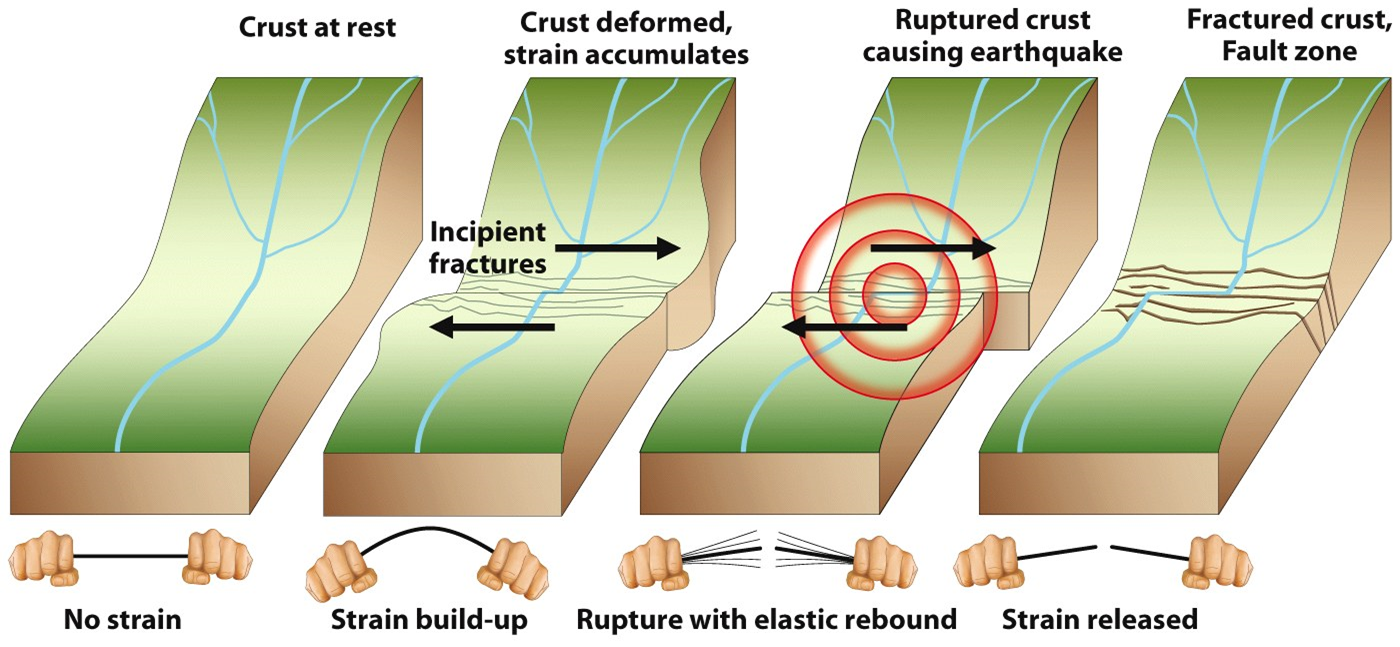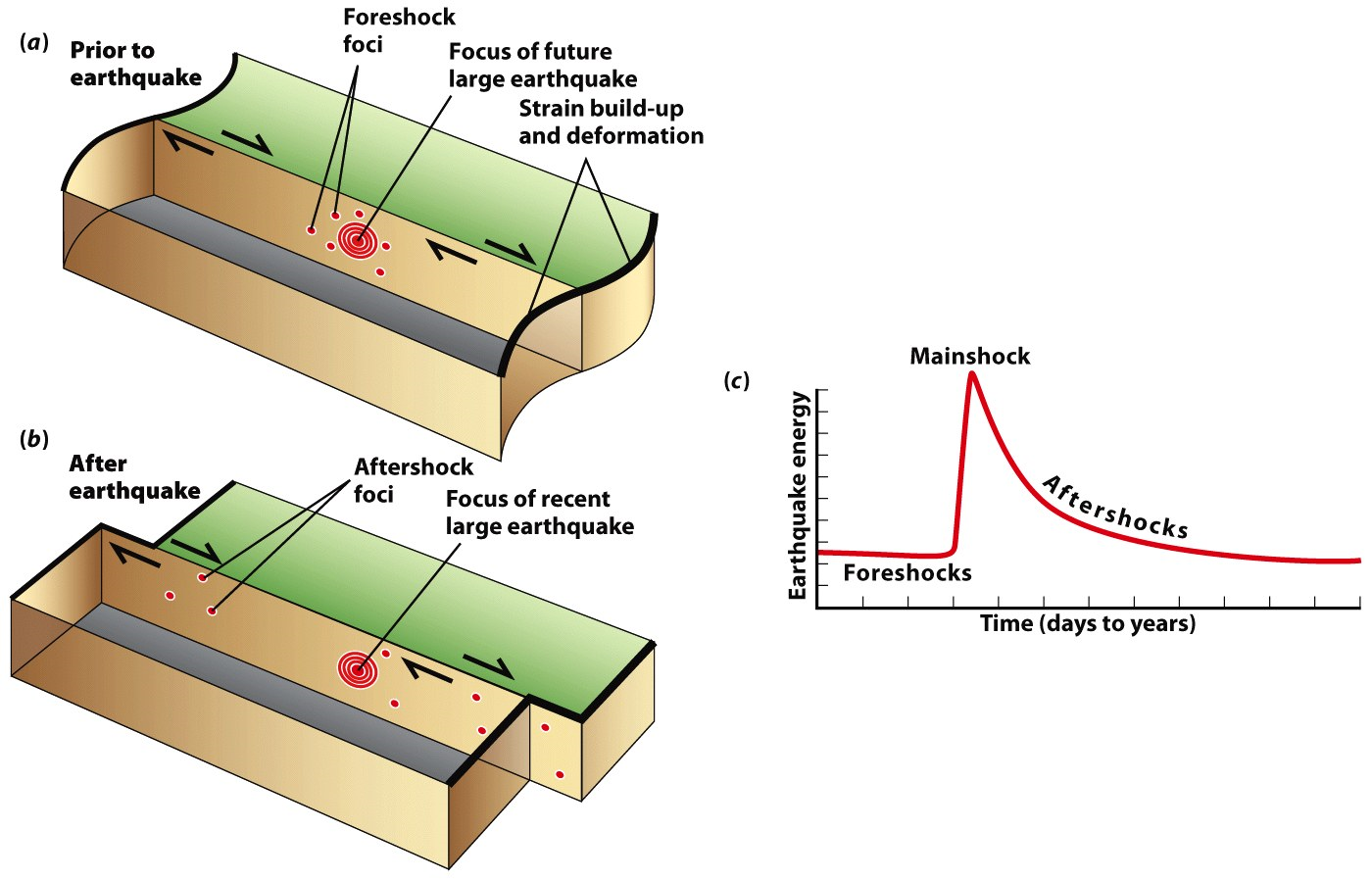
Earthquakes
Terminology
Focus – aka Hypocenter: Where the release of energy occurs
Faults - fractures in the ground along which apreciable displacement occurs.Epicenter - the point on the Earth's surface directly above the focus
What Happens During an EQ?
Stress is the force acting upon the rock. This can be in the form of compressional stress (convergent plate boundaries), tensional stress (divergent plate boundaries), and shear (transform plate boundaries). Strain is the changes in the rock in response to stress.
Elastic Rebound - This gradual accumulation and release of stress and strain is now referred to as the "elastic rebound theory" of earthquakes. Most earthquakes are the result of the sudden elastic rebound of previously stored energy. (source).
Most people think that rocks are cold, brittle, and easily broken. Some are, but rocks can actually bend quite a bit before they break. During this time, strain can build up in the rocks until they fail (break). The image below illustrates this concept. At first, the ground is at rest. As stress increases, strain accumulates, bending the rock (or, in the lower part of the image, the stick). When the stress is too great, or too much strain accumulates, the rocks will break, causing an earthquake. After the earthquake, the ground tries to settle back into the position it once was in.

When an earthquake happene, it is usually the mainshock - the largest earthquake in a series of quakes - that is felt. However, sometimes is preceeded by foreshocks (small earthquakes that happen in the area where the mainshock will be) but is always followed by aftershocks (earthquakes that occur after the mainshock as the ground is settling back down). Some aftershocks can be larger than the original earthquake.

Seismic Waves
There are two main types of seismic waves:
- Surface waves
- Rayleigh waves are a seismic surface wave causing the ground to shake in an elliptical motion
- Love waves are a surface wave having a horizontal motion that is transverse (or perpendicular) to the direction the wave is traveling
- Body waves
- P waves are also called Primary waves; they move with a push-pull motion, changing the volume of the intervening material. P waves travel about 1.7 x faster than S waves
- S waves move at right angles to their direction of travel and travel only through solids. They have a slower velocity than P waves and a slightly greater amplitude than P waves
Properties of Seismic Waves |
||||
| Type | Relative Speed | Passes Through | Type of Motion | |
| Body Waves | P Waves | Fastest | Solids and liquids | push-pull |
| S Waves | 2nd Fastest | Solids only | up and down | |
| Surface Waves | Rayleigh Waves | 3rd Fastest | Earth's surface | up and down, forward & back |
| Love Waves | Slowest | Earth's surface | side to side | |
Seismographs are machines that records the movement of Earth. The record it produces is called a seismogram. Scientists can use the seismogram to determine the size or magnitude of the earthquake.